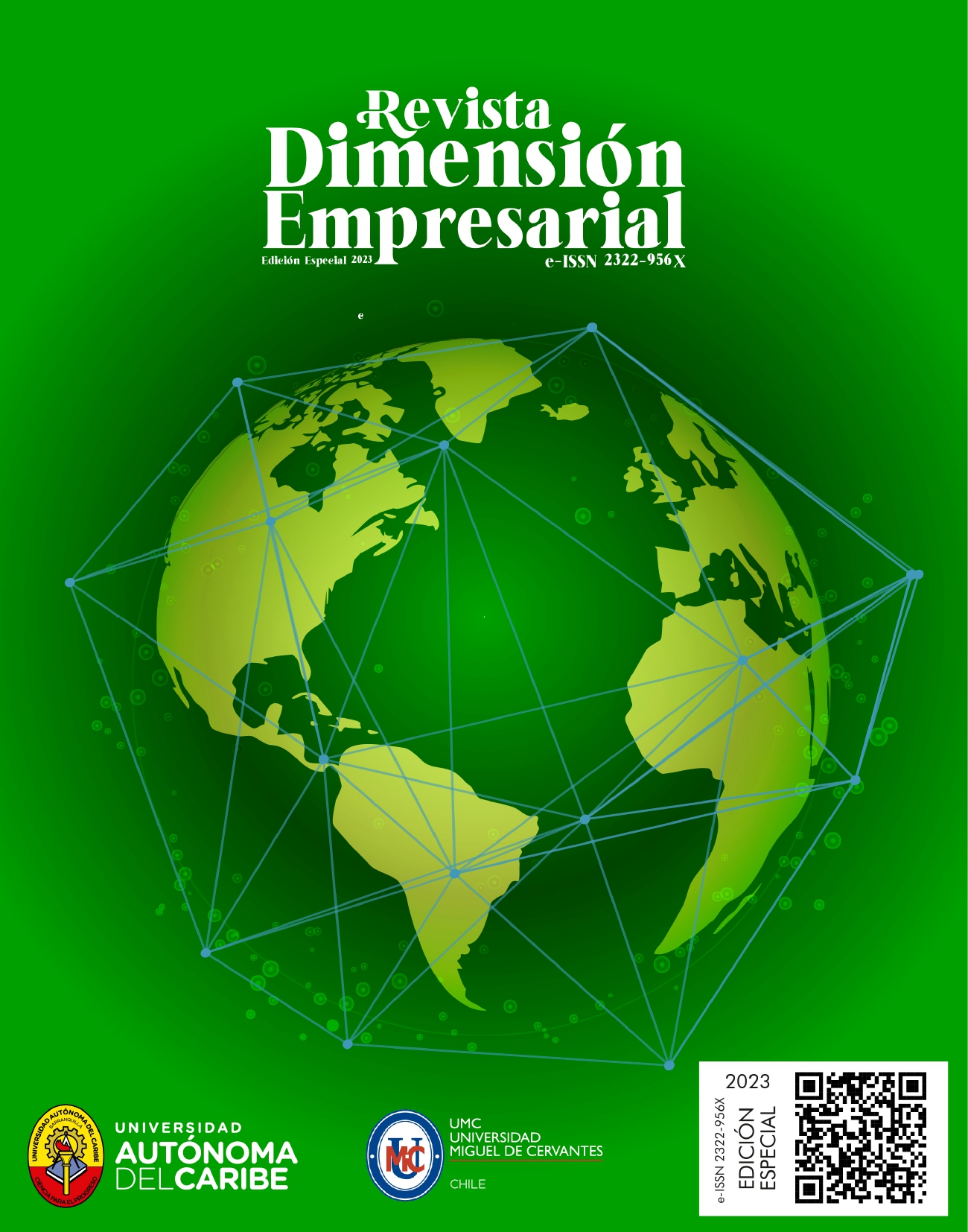DISCURSO DA MÍDIA SOBRE AS CAPACIDADES DINÂMICAS CHILENAS
DOI:
https://doi.org/10.15665/dem.v21i1.3462Palavras-chave:
Dynamic Capabilities, Chile, Discourse AnalysisResumo
Dentro do contexto social e econômico chileno, realiza-se uma pesquisa qualitativa com o objetivo de descrever as características conceituais dos discursos midiáticos associados às capacidades dinâmicas das organizações. O estudo identifica 16 construtos significativos que articulam um discurso, o qual estabelece as causas políticas envolvidas no dinamismo do ambiente e os fundamentos sociais das capacidades das empresas. O resultado é um mapa de processos que descreve o modelo mental prevalente comumente encontrado nos discursos midiáticos analisados.
Referências
Acs, Z. J., Audretsch, D. B., y Lehmann, E. E. (2013). The knowledge spillover theory of entrepreneurship. Small business economics, 41, 757-774.
Andrews, K.R. (1971) The Concept of Corporate Strategy. Irwin, Homewood. Open Journal of Business and Management, Vol.2 No.3, July 25, 2014
Augusto Felício, J., Couto, E., y Caiado, J. (2014). Human capital, social capital and organizational performance. Management decision, 52(2), 350-364.
Bogers, M., Chesbrough, H., Heaton, S., y Teece, D. J. (2019). Strategic management of open innovation: A dynamic capabilities perspective. California Management Review, 62(1), 77-94.
Billi, M., Urquiza Gómez, A., & Feres Klenner, C. (2017). Environmental communication and non-conventional renewable energy projects. content analysis of chilean mass media. Revista Latina De Comunicacion Social, 72, 1218-1237. doi:10.4185/RLCS-2017-1216
Camus, P. A., Ponce, N., Contreras, F. C., & Del Valle Tapia, M. (2018). Critical discourse analysis: The higher education reform in chile in written media. [Análisis crítico del discurso: La reforma a la educación superior en Chile en medios de comunicación escritos] Revista Colombiana De Educacion, (75), 77-98. doi:10.17227/rce.num75-8102
Chamberlin, E. (1933) The Theory of Monopolistic Competition. The Economic Journal, Volume 43, Issue 172, 1 December, Pages 661–666, https://doi.org/10.2307/2224511
Cohen, W. M., y Levinthal, D. A. (1990). Absorptive capacity: A new perspective on learning and innovation. Administrative science quarterly, 128-152.
Cyert, R. and March, J. (1963) A Behavioral Theory of the Firm. Prentice-Hall, Englewood Cliffs.
D’Aveni RA. 1994. Hypercompetition: Managing the Dynamics of Strategic Maneuvering. Free Press: New York.
Damanpour, F. (1991). Organizational innovation: A meta-analysis of effects of determinants and moderators. Academy of management journal, 34(3), 555-590.
Davidsson, P. (2015). Entrepreneurial opportunities and the entrepreneurship nexus: A re-conceptualization. Journal of business venturing, 30(5), 674-695.
Giuliani, E., y Bell, M. (2005). The micro-determinants of meso-level learning and innovation: evidence from a Chilean wine cluster. Research policy, 34(1), 47-68.
Herrera, D. I. (2020). Discourse analysis in the hybrid media system: A methodological approach. [Análisis discursivo en sistemas híbridos de medios: Una aproximación metodológica] Logos: Revista De Linguistica, Filosofia y Literatura, 30(2), 314-330. doi:10.15443/RL3024
Helfat, C. E., & Peteraf, M. A. (2009). Understanding dynamic capabilities: progress along a developmental path. Strategic Organization, 7(1), 91–102. https://doi.org/10.1177/1476127008100133
Honda, A., de Araujo Oliveira, S. R., Ridde, V., Zinszer, K., y Gautier, L. (2023). Attributes and Organizational Factors that Enabled Innovation in Health Care Service Delivery during the COVID-19 Pandemic–Case Studies from Brazil, Canada and Japan. Health Systems y Reform, 9(2), 2176022.
Hoppe, M. (2018). The Prime Mover Matrix: A Conversation Piece for Building Strategic Innovative Capacity. Technology Innovation Management Review, 8(7), 5-13.
Jin, C. H., y Lee, J. Y. (2020). The impact of entrepreneurship on managerial innovation capacity: The moderating effects of policy finance and management support. South African journal of business management, 51(1), 1-13.
Kitsios, F., y Kamariotou, M. (2021). Information Systems Strategy and Innovation: Analyzing Perceptions Using Multiple Criteria Decision Analysis. IEEE Transactions on Engineering Management.
Laursen, K., y Salter, A. (2006). Open for innovation: the role of openness in explaining innovation performance among UK manufacturing firms. Strategic management journal, 27(2), 131-150.
Lessard, D., Teece, D. J., y Leih, S. (2016). The dynamic capabilities of Meta‐multinationals. Global Strategy Journal, 6(3), 211-224.
Mancuso, I., Petruzzelli, A. M., y Panniello, U. (2023). Innovating agri-food business models after the Covid-19 pandemic: The impact of digital technologies on the value creation and value capture mechanisms. Technological Forecasting and Social Change, 190, 122404.
Martínez Ardila, H. E., Mora Moreno, J. E., y Camacho Pico, J. A. (2020). Networks of collaborative alliances: the second order interfirm technological distance and innovation performance. The Journal of Technology Transfer, 45, 1255-1282.
McGrath, R. G. (2001). Exploratory learning, innovative capacity, and managerial oversight. Academy of management journal, 44(1), 118-131.
Moon, T. (2010). Organizational cultural intelligence: Dynamic capability perspective. Group y Organization Management, 35(4), 456-493.
Mowery, D. C., Malerba, F., Dosi, G., y Teece, D. J. (2019). Introduction: Nathan Rosenberg as a founding father of the economics of innovation. Industrial and Corporate Change, 28(2), 283-288.
Nelson, R. y Winter, S. (1982) An Evolutionary Theory of Economic Change. Harvard University Press, Cambridge, MA.
Peteraf, M. A. (1993). The cornerstones of competitive advantage: a resource‐based view. Strategic management journal, 14(3), 179-191.
Petit, N., y Teece, D. J. (2021). Innovating big tech firms and competition policy: favoring dynamic over static competition. Industrial and Corporate Change, 30(5), 1168-1198.
Pittaway, L., Robertson, M., Munir, K., Denyer, D., y Neely, A. (2004). Networking and innovation: a systematic review of the evidence. International journal of management reviews, 5(3‐4), 137-168.
Ricardo, D. (1817). On the Principles of Political Economy and Taxation (John Murray, London). In: Sraffa, P., Ed., The Works and Correspondence of David Ricardo, Vol. 1, Cambridge University Press, Cambridge, 1951.
Richardson, G. B. (1972) The Organisation of Industry, The Economic Journal, Volume 82, Issue 327, Pages 883–896, https://doi.org/10.2307/2230256
Schilling, M. A., y Phelps, C. C. (2007). Interfirm collaboration networks: The impact of large-scale network structure on firm innovation. Management science, 53(7), 1113-1126.
Schumpeter, J. A. (1950). Capitalism, Socialism, and Democracy: Third Edition. Reino Unido: HarperCollins.
Smith, A. (1776). The Wealth of Nations: An inquiry into the nature and causes of the Wealth of Nations. Harriman House Limited, 2010.
Son, I., Kim, J., Park, G., y Kim, S. (2018). The impact of innovative technology exploration on firm value sustainability: The case of part supplier management. Sustainability, 10(10), 3632.
Teece, D. J. (2007). Explicating dynamic capabilities: the nature and microfoundations of (sustainable) enterprise performance. Strategic management journal, 28(13), 1319-1350.
Teece, D. J., Pisano, G., y Shuen, A. (1997). Dynamic capabilities and strategic management. Strategic management journal, 18(7), 509-533.
Thakker, A., y Sun, D. (2023). Handmade papers: Innovation, Technology, and Design. Journal of Natural Fibers, 20(1), 2187505.
Williamson, O. E. (1999). Strategy research: governance and competence perspectives. Strategic management journal, 20(12), 1087-1108.
Zaheer, A., y Bell, G. G. (2005). Benefiting from network position: firm capabilities, structural holes, and performance. Strategic management journal, 26(9), 809-825.
##submission.downloads##
Publicado
Como Citar
Edição
Secção
Licença
Direitos de Autor (c) 2024 David Álvarez-Maldonado

Este trabalho encontra-se publicado com a Licença Internacional Creative Commons Atribuição-NãoComercial-SemDerivações 4.0.
Os autores mantêm todos os direitos a que têm direito e autorizadas com a sua reprodução de assinatura gratuita do documento enviado ou, no caso se necessário, assumirá, ao assinar o Certificado de Originalidade e Cessão de Direitos, o registro de ter a autoridade para a transferência de direitos de propriedade que estão livres devido a nenhum custo para qualquer procedimento do Dimensión Empresarial.
Instruções para preenchimento Originalidade Certificação e Transferência de Direitos de autor.
1. Clique aqui e tenha a originalidade da forma Certification and Copyright Assignment.
2. No formulário baixo, clique em cada um os campos e preencha os correspondentes.
3. Uma vez que os campos estão preenchidos, copie o fim sua assinatura digitalizada ou assinatura digital. Por favor, ajustar o tamanho da assinatura no formulário.
4. O formulário deve ser assinado por todos os autores.
5. Finalmente, salvá-lo como PDF e enviá-lo através da plataforma OJS como arquivo suplementar ou correio revistadimensionempresarial@uautonoma.edu.co.
Se você tiver dúvidas contate-nos, por favor.



